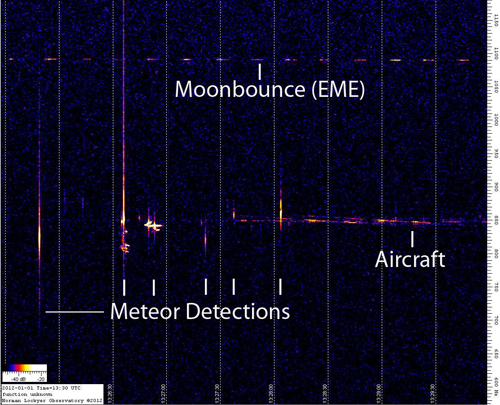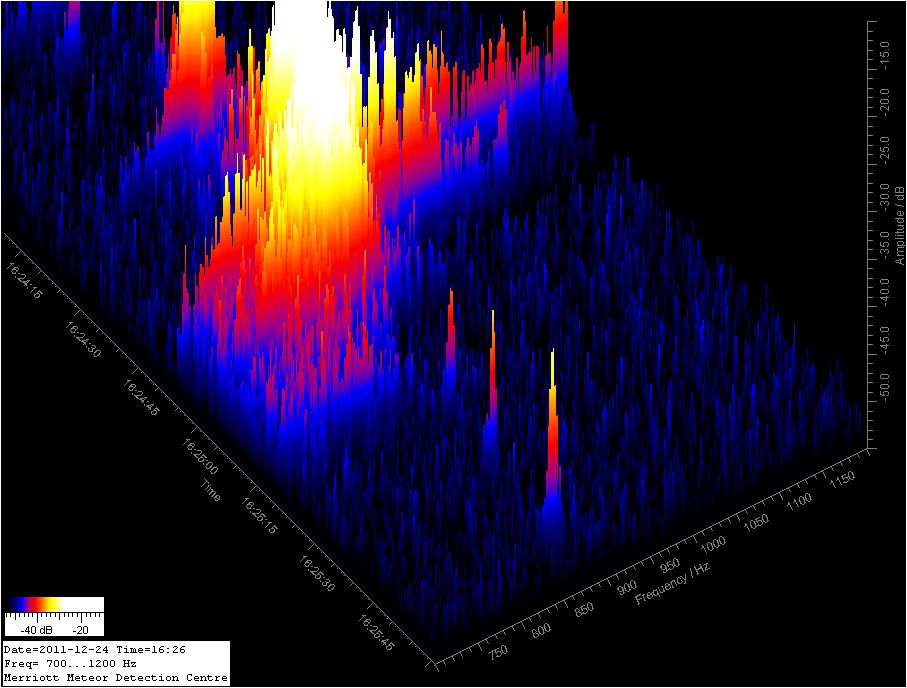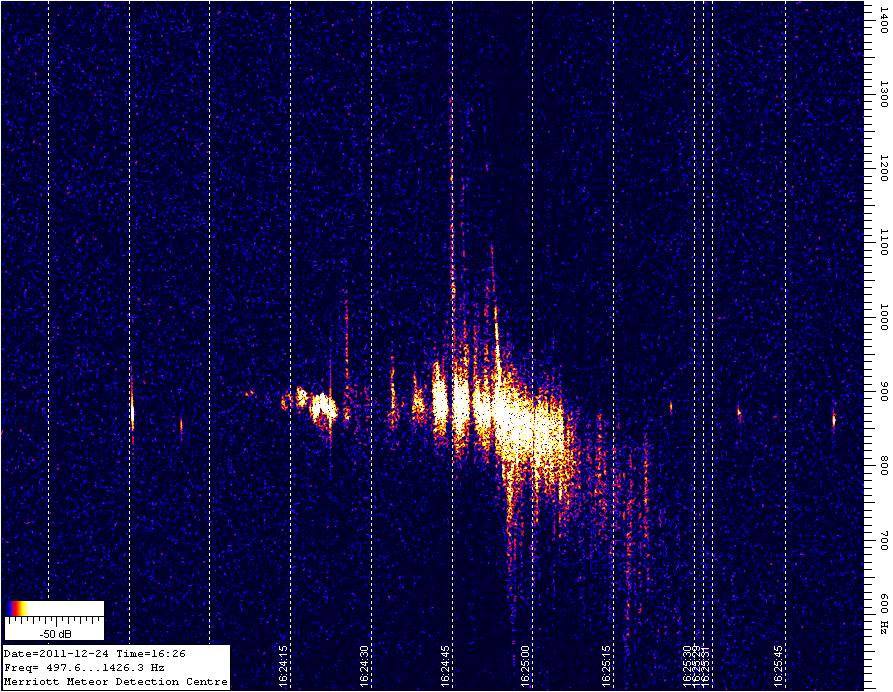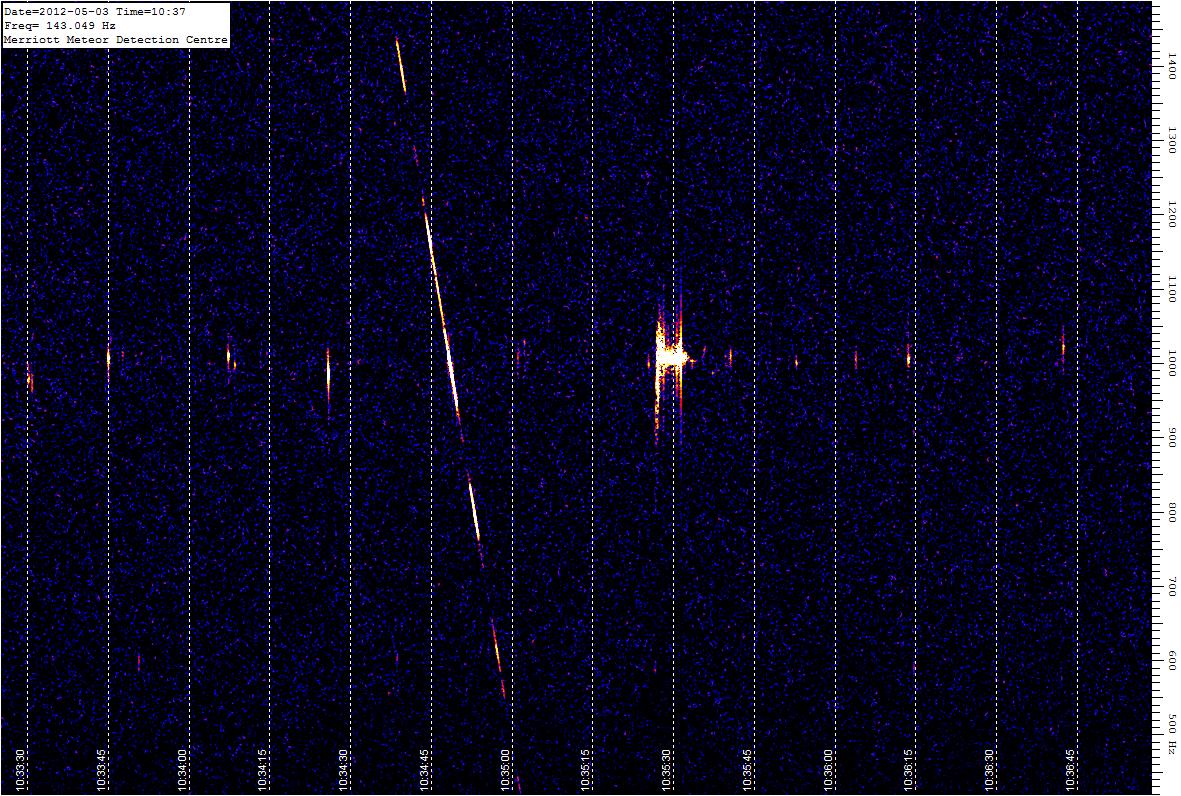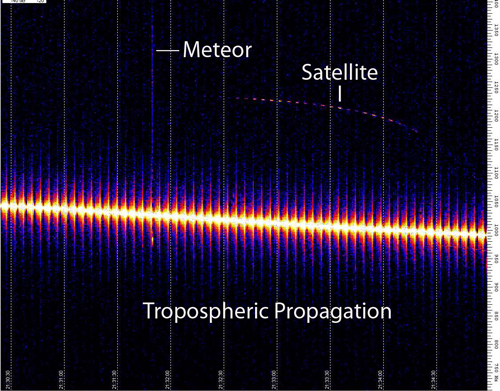|
|
Typical Meteor detections | |
|
|
Moonbounce (Radar Signal hits the moon and returns after a
journey of 500,000 miles) Aircraft landing at Charles De Gaulle Airport, Paris Meteor detections |
|
|
|
Soyuz Rocket Booster Re-entry 24/12/11
Re-entry was visible from several Western European Countries on Xmas Eve 2011 |
|
|
|
International Space Station (I.S.S.)
|
|
|
|
Tropospheric Radio Propagation
Tropospheric ducting is a type of radio propagation that can
occur during periods of anti-cyclonic weather. On such occasions,
a change in the refractive index of the atmosphere at the
boundary between air masses of different temperature and/or
humidity can cause a radio signal to be bent to follow the curvature of the Earth.
Radio signals enhanced this way can often travel up to 800
miles (1300Km) - and even further under extreme conditions. Receiving distant FM Broadcast Stations is a typical result.
The images
to the left
show how Tropospheric Propagation affects our systems. In these
images
they
were receiving the radio signal direct from the
G.R.A.V.E.S. Radar Station. The lower image also shows a Meteor and Satellite detection. |
|
 This work is licensed under a Creative Commons Attribution 3.0 Unported License.
This work is licensed under a Creative Commons Attribution 3.0 Unported License.
|
||

